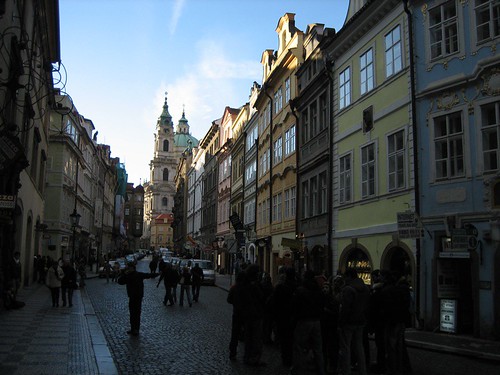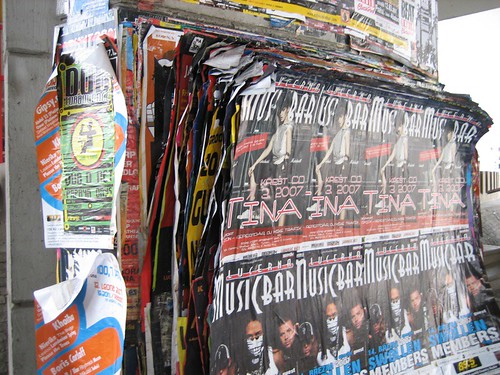
My volunteer visa has expired which meant that 1) I had to go on vacation, and 2) I’ve reached my one-year mark in Jerusalem. It’s been a quick-moving one, this past year, and I’m not quite ready to leave, end of contract or no, so I’ll be staying on as a local hire for the next couple months, doing everything I haven’t fit into the past twelve.
Back to my vacation: Karin, Krista and I, in an effort to align our three-month tourist visas, went to Prague for a scant week. The decision was made based on a complex mathematical formula which included the price of airline tickets, the price of hostel rooms, and the quantity of goulash available for consumption. Prague won hands down.
I get bored regaling travel stories, so this blog (or shall I say blague?) will be mainly photos.





Chocolate! Beer! Communists! The best that Prague has to offer.

Krista and I got haircuts at a swanky salon. For 18 hours I looked like a French hair model, and then I just looked scruffy again.
And one of my favorite parts of the city: the multilayered billboards:


We took a day trip to Terezin, a concentration camp a 90-minute drive out of the city. Terezin was a holding camp, rather than an extermination camp, during the Nazi occupation of Czechoslovakia. Hundreds of thousands of Jews and Czech resisters were held here before being moved on to Auschwitz and other death camps. Thousands still died in the fortress-turned-camp, though, and the walk through the bunk rooms can make you stomach-sick. Perhaps the most disturbing part was that in 1944, two Red Cross delegates and a third friend came to tour the camp to check on the conditions. Why it was okay to have a concentration camp, as long as the conditions were humane, is baffling and sick, but this was the case. Terezin is infamous for the hoax pulled off by the Nazis on this visit. Having advanced notice, they sent the large majority of prisoners off to extermination camps in order to hide the fact that there was over-crowding. Bathrooms were installed at the last minute, long lines of sinks and mirrors were ordered for the “barbershop”, children sat in a very temporary school room, being taught by a teacher for the few hours the Red Cross representatives were in the camp.

These short-lived “humane” conditions and a flowerbed here and there was enough for the Red Cross to give a favorable report of the camp.
